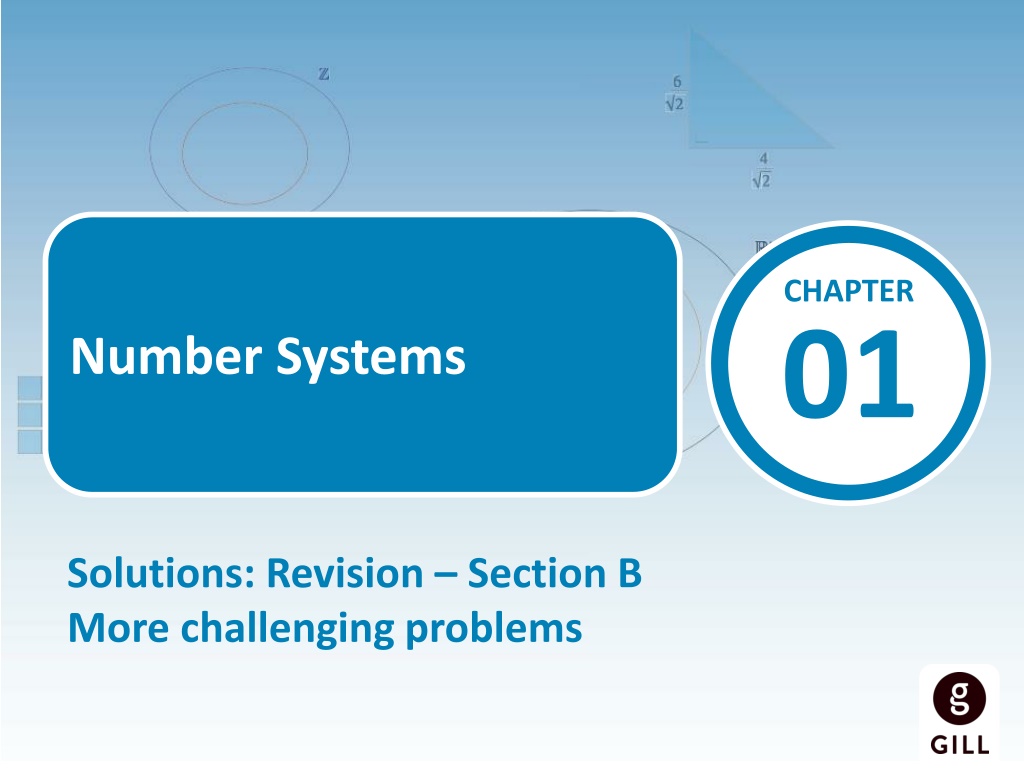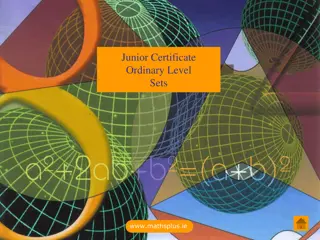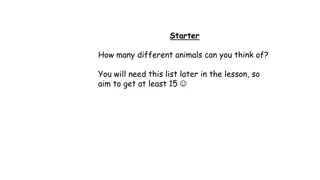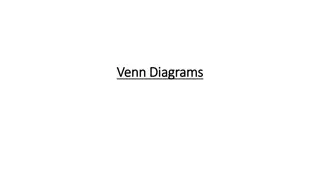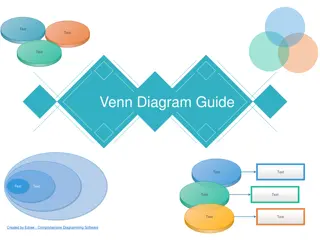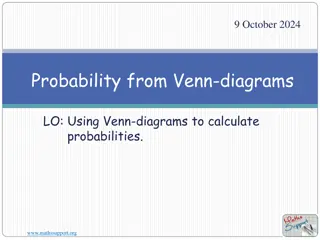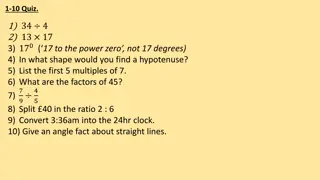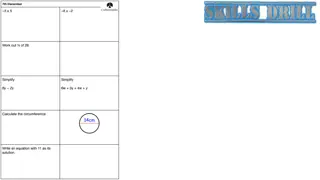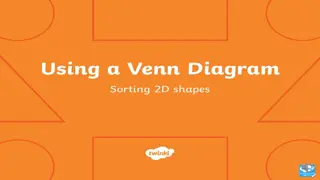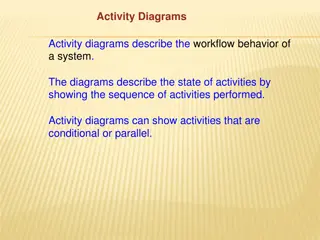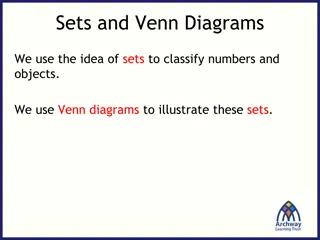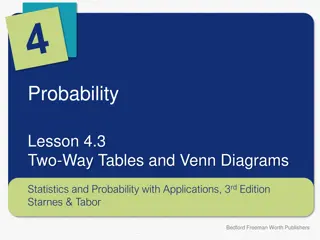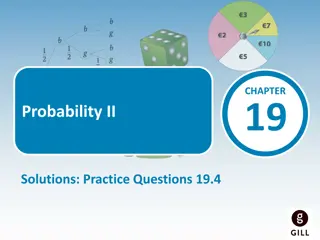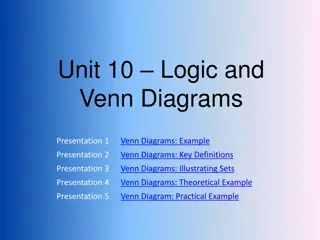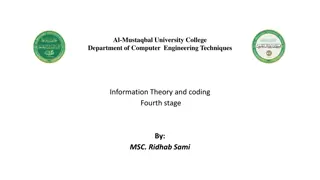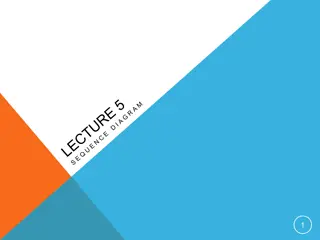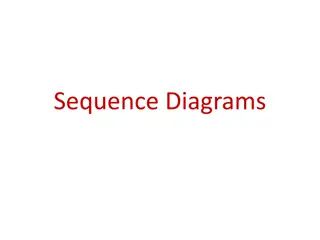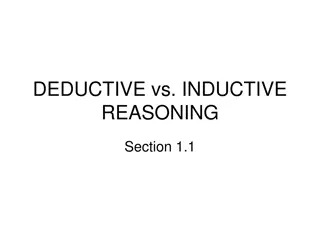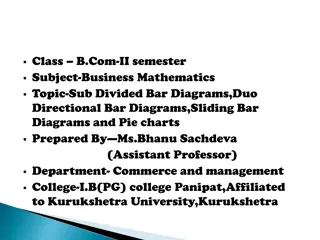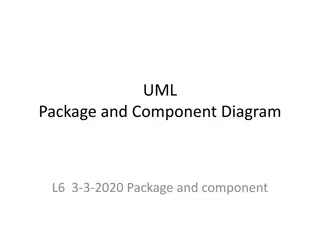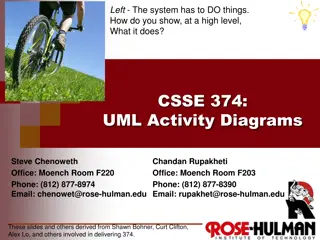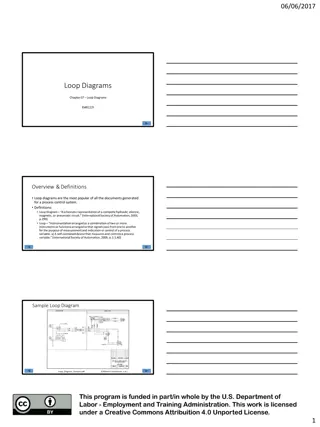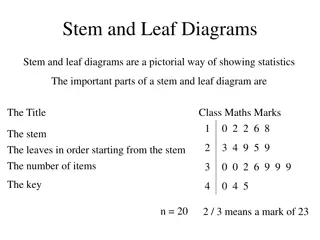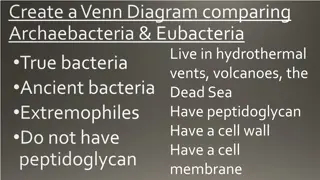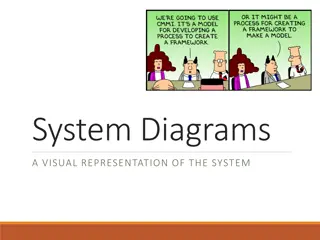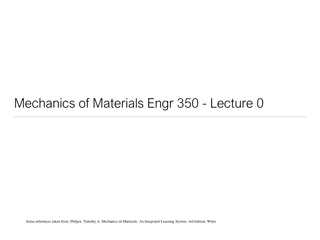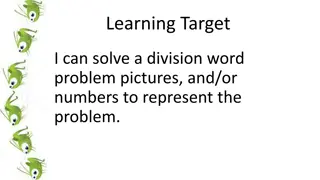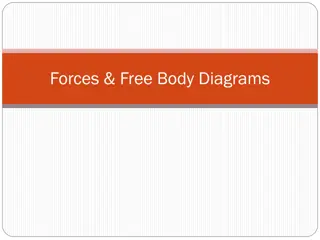Solving Challenging Number System Problems Using Venn Diagrams
Practice manipulating Venn diagrams with numbers to sharpen your understanding of number systems. Insert the given numbers into the corresponding regions of the diagrams to test your knowledge and reinforce key concepts.
Download Presentation

Please find below an Image/Link to download the presentation.
The content on the website is provided AS IS for your information and personal use only. It may not be sold, licensed, or shared on other websites without obtaining consent from the author. Download presentation by click this link. If you encounter any issues during the download, it is possible that the publisher has removed the file from their server.
E N D
Presentation Transcript
CHAPTER 01 Number Systems Solutions: Revision Section B More challenging problems
01 Revision and Exam Style Questions: Section B 1. The Venn diagram represents the sets , , and . Copy the diagram and insert each of the following numbers into the correct region of the diagram: 3 (i) (i) 3 ]
01 Revision and Exam Style Questions: Section B 1. The Venn diagram represents the sets , , and . Copy the diagram and insert each of the following numbers into the correct region of the diagram: 3 4 (ii) (ii) 3 4
01 Revision and Exam Style Questions: Section B 1. The Venn diagram represents the sets , , and . Copy the diagram and insert each of the following numbers into the correct region of the diagram: 6 5 (iii) (iii) 6 5
01 Revision and Exam Style Questions: Section B 1. The Venn diagram represents the sets , , and . Copy the diagram and insert each of the following numbers into the correct region of the diagram: 2 (iv) 2 (iv)
01 Revision and Exam Style Questions: Section B 1. The Venn diagram represents the sets , , and . Copy the diagram and insert each of the following numbers into the correct region of the diagram: 81 (v) (v) 81
01 Revision and Exam Style Questions: Section B 1. The Venn diagram represents the sets , , and . Copy the diagram and insert each of the following numbers into the correct region of the diagram: 10 24 (vi) (vi)10 24
01 Revision and Exam Style Questions: Section B 1. The Venn diagram represents the sets , , and . Copy the diagram and insert each of the following numbers into the correct region of the diagram: (vii) 0 (vii) 0
01 Revision and Exam Style Questions: Section B 1. The Venn diagram represents the sets , , and . Copy the diagram and insert each of the following numbers into the correct region of the diagram: (viii) e (viii) e
01 Revision and Exam Style Questions: Section B 2. n 1 is a natural number, for n >1. Write down the next three natural numbers in terms of n. (i) Start at n 1 and add 1: n 1 + 1 = n Add 1 to n: n + 1 = n + 1 Add 1 to n + 1: n + 1 + 1 = n + 2 So the next three natural numbers are: n, n + 1, n + 2
01 Revision and Exam Style Questions: Section B 2. n 1 is a natural number, for n >1. Hence, or otherwise, show that the sum of any three consecutive natural numbers is divisible by three. (ii) ? + (? + 1 + (? + 2 3 =? + ? + ? + 1 + 2 3 =3? + 3 3 = ? + 1 n + 1 will always be a whole number, therefore any 3 consecutive numbers are divisible by 3.
01 Revision and Exam Style Questions: Section B 3. n is a natural number. Write down the next three natural numbers in terms of n. (i) n + 1, n + 2, n + 3
01 Revision and Exam Style Questions: Section B 3. n is a natural number. Hence, or otherwise, investigate whether the following is true or false: (ii) The sum of four consecutive natural numbers is never divisible by four. ? + (? + 1 + (? + 2 + (? + 3 4 =? + ? + ? + ? + 1 + 2 + 3 4 =4? + 6 4 3 2 = + n 3 n + will not be a whole number, therefore the sum of any 4 consecutive 2 numbers is not divisible by 4.
01 Revision and Exam Style Questions: Section B ( 4 5 1 5 3 Express in the form , wherepand q are integers. )( ) p+q 5 + 4. 5 3 + = 5 3 + + 4 5 1 4 5 1 5 3 = + 5 3 4 5 5 12 5 = 20 11 5 3 + = 17 11 5 +
01 Revision and Exam Style Questions: Section B At the beginning of every six-hour period, a patient is given 5 ml of a particular drug. 5. During each of these six-hour periods, the patient s body partially breaks down the 1 3 drug. Only of the total amount of the drug present in the patient s body at the beginning of each six-hour period remains at the end of that period. How much of the drug is in the patient s body immediately after the second dose is given? (i) 1 3+ 1 3+3 =4 3 4 3 =1 3 of the dose 20 3 = 5 ml
01 Revision and Exam Style Questions: Section B At the beginning of every six-hour period, a patient is given 5 ml of a particular drug. 5. During each of these six-hour periods, the patient s body partially breaks down the 1 3 drug. Only of the total amount of the drug present in the patient s body at the beginning of each six-hour period remains at the end of that period. Show that the total amount of the drug in the patient s body never exceeds 10 ml in the first day of treatment. (ii) Start of 1st hour: 5 ml 1 3 5 3 ( ) 5 = ml remains End of 6th hour: 5 3 20 3 + = 5 ml Start of 7th hour: = 1 3 20 3 20 ml remains 9 End of the 12th hour:
01 Revision and Exam Style Questions: Section B At the beginning of every six-hour period, a patient is given 5 ml of a particular drug. 5. During each of these six-hour periods, the patient s body partially breaks down the 1 3 drug. Only of the total amount of the drug present in the patient s body at the beginning of each six-hour period remains at the end of that period. Show that the total amount of the drug in the patient s body never exceeds 10 ml in the first day of treatment. (ii) 20 9 65 9 + = Start of the 13th hour: 5 ml = 1 65 3 65 27 65ml remains 27 End of the 18th hour: 9 200 27 + = 5 ml Start of the 19th hour: = 1 200 3 200ml remains 81 27 End of 24th hour:
01 Revision and Exam Style Questions: Section B At the beginning of every six-hour period, a patient is given 5 ml of a particular drug. 5. During each of these six-hour periods, the patient s body partially breaks down the drug. Only 1 3 of the total amount of the drug present in the patient s body at the beginning of each six-hour period remains at the end of that period. Show that the total amount of the drug in the patient s body never exceeds 10 ml in the first day of treatment. (ii) Since all values are below 10 ml, we can conclude that the total amount of the drug in the patient s body never exceeds 10 ml in the first day of treatment.
01 Revision and Exam Style Questions: Section B 1 6. Find integers a and b such that 5 2= ? + ? 5. 1( 5 + 2 1 5 2= 5 2 5 + 2 5 + 2 = 5 5 + 2 5 2 5 4 5 + 2 5 4 = 5 + 2 1 = = 5 + 2 = 2 + 5
01 Revision and Exam Style Questions: Section B = { 8,?,1 7. The set A 3, 4 5, 3 X = {integers} Y = {irrational numbers} Z = {natural numbers} List the elements of A X (i) A X = { 8} A Y (ii) = , 3 A Y A Z (iii) A Z = { } = since there are no natural numbers in the set A.
01 Revision and Exam Style Questions: Section B 4+ 2 4- 2 8. A right-angled triangle has a base length and a perpendicular height as shown in the diagram. Show that the total length of the three sides of the triangle is a natural number. To find the length of the third side we use Pythagoras Theorem. a2+ b2= c2 2; = = + = 4 4 2; unknown side a b c 2+ 4 + 2 2= ?2 4 2 4 2 4 2 + 4 + 2 4 + 2 = ?2 16 4 2 4 2 + 2 + 16 + 4 2 + 4 2 + 2 = ?2 = 2 36 c 36 = 6 = ?
01 Revision and Exam Style Questions: Section B 4+ 2 4- 2 8. A right-angled triangle has a base length and a perpendicular height as shown in the diagram. Show that the total length of the three sides of the triangle is a natural number. Perimeter = base + height + hypotenuse = (4 + 2 + (4 2 + 6 = 8 + 6 = 14
01 Revision and Exam Style Questions: Section B 9. Two cyclists are cycling on a circular path. The first cyclist completes a lap in 12 minutes and the second cyclist completes it in 18 minutes. If they both started at the same place and at the same time and both go in the same direction, after how many minutes will they meet again at the starting point?
01 Revision and Exam Style Questions: Section B 9. Two cyclists are cycling on a circular path. The first cyclist completes a lap in 12 minutes and the second cyclist completes it in 18 minutes. If they both started at the same place and at the same time and both go in the same direction, after how many minutes will they meet again at the starting point? We need to find the LCM of 12 and 18. Using the prime factors method: Multiples of 12 = 12, 24, 36, 48 Prime factors of 12 = 22 3 Multiples of 18 = 18, 36, 54 LCM = 36 minutes Prime factors of 18 = 2 32 Highest powers of the common factors are 22 and 32. LCM = 22 32= 36 minutes.
01 Revision and Exam Style Questions: Section B 10. Ben exercises every six days and Isabel every eight days. Ben and Isabel both exercised today. How many days will it be until they exercise together again? We need to find the LCM of 6 and 8. Multiples of 6 = 6, 12, 18, 24, 30, 36, 42, 48 Multiples of 8 = 8, 16, 24, 32, 40, 48, 56, 64 LCM = 24 days Using the prime factors method: Prime factors of 6 = 2 3 Prime factors of 8 = 23 Highest powers of the common factors are 23and 3 LCM = 23 3 = 24 days
